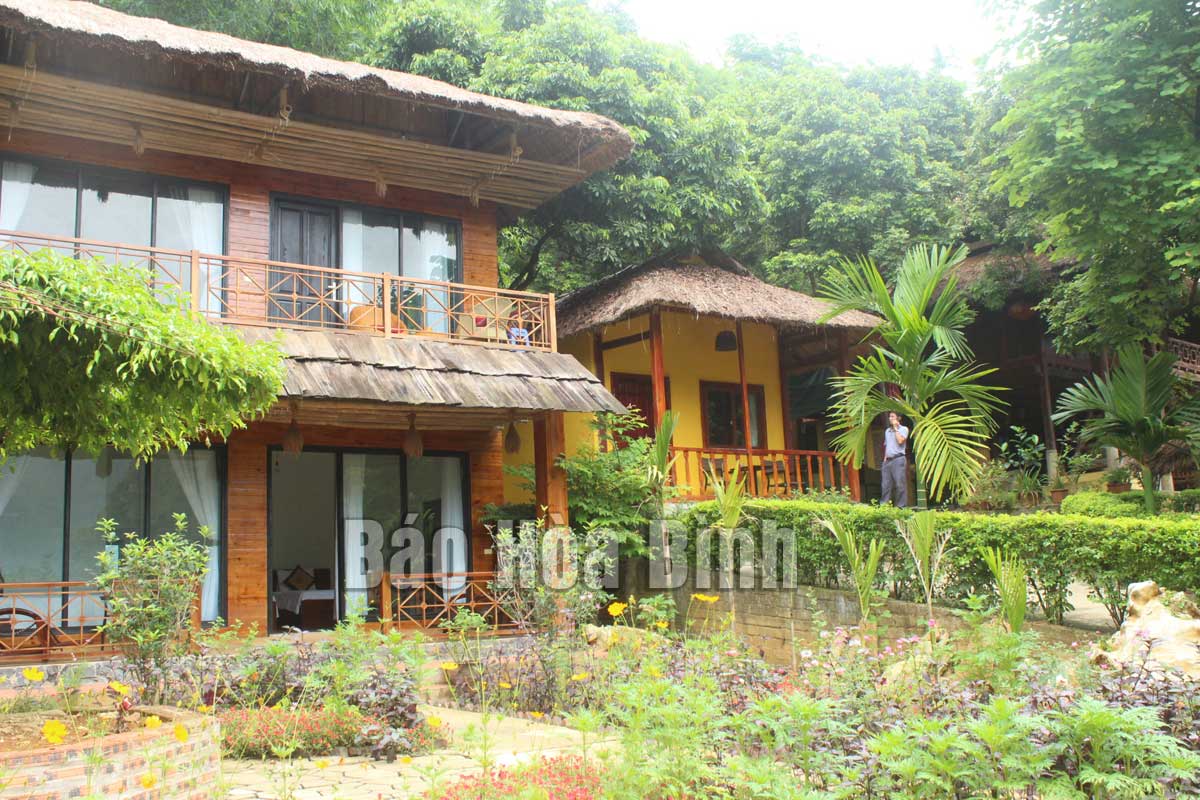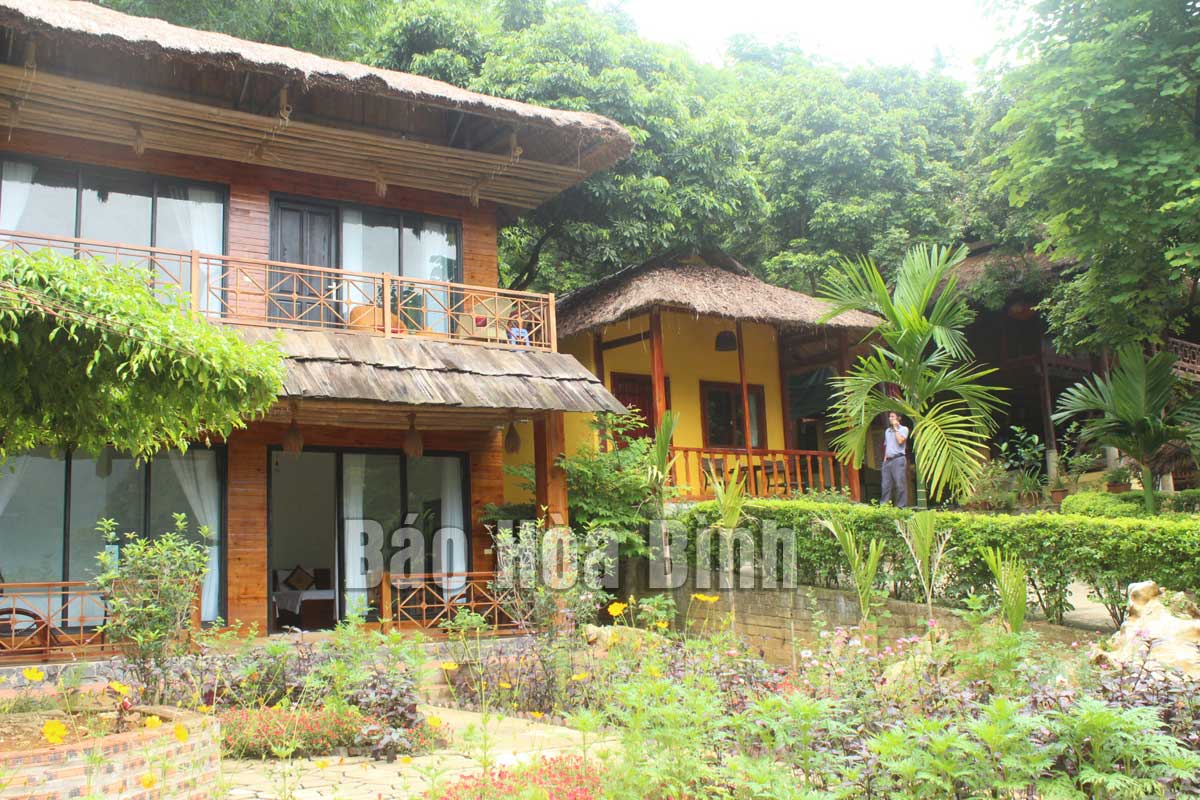
(HBO) – Implementing Action Programme No. 15- CTr/TU dated September 22, 2017 of the Standing Board of the provincial Party Committee on the performance of the Politburo’s Resolution No. 08-NQ/TW dated January 16, 2017 on turning tourism into a spearhead economic sector in the 2017- 2022 period, Hoa Binh province has promoted the development of human resources for the tourism industry and organised training courses to improve professional skills for state management officials and tourism companies.
There are
many tourist attractions in Na Phon commune, Mai Chau district.
Every year, the provincial Steering Committee for Tourism arranges trips for
its members to exchange experiences relating to tourism development management
in a number of provinces and cities, whose tourism sectors have developed such
as Quang Binh, Quang Nam, Khanh Hoa, Quang Ninh, Thua Thien-Hue and Da Nang.
The province prioritises developing human resources towards
professionalism, civilisation and improving their competitiveness to meet the
needs of tourists. Attention will be paid to on-the-spot training at resorts,
tourist attractions, hotels and restaurants, especially at Hoa Binh lake and
Mai Chau tourist areas. Priority will be given to supporting professional
training for ethnic minorities engaged in tourism in community-based tourism
villages.
Over the past five years, the Department of Culture, Sports and Tourism has
coordinated with a number of universities and colleges to organise 30 courses
for 1,630 participants. They include six training courses on One Commune One
Product (OCOP) rural tourism services in Mai Chau, Tan Lac, Cao Phong and Da
Bac districts.
The Department of Agriculture and Rural Development held training courses to
improve the quality of human resources in the field of tourism service
business, focusing on supporting start-ups, transport businesses and households
that engage in community-based tourism.
The Department of Labour, Invalids and Social Affairs asked vocational training
institutions to offer training on tour guides, cooking and receptionists for
households that offer homestay services as well as restaurants in the districts
of Da Bac, Mai Chau, Kim Boi, Cao Phong, Tan Lac and Hoa Binh city to
contribute to promoting tourism development in general and community-based
tourism in particular./.
Located just a 20-minute drive from Hoa Binh City, Ora Hill Farmstay & Glamping Hoa Binh is a captivating new destination nestled in Mo hamlet, Bình Thanh commune, Cao Phong district. Combining farming with leisure, this tranquil retreat is perfect for those seeking balance, joy, and an immersive experience in the expansive beauty of nature.
Muong Bi - Tan Lac is renowned as one of the four famous Muong regions in Hoa Binh province. Blessed by nature with a favourable climate and stunning landscapes, Tan Lac holds great advantages for tourism development. The local tourism industry has made remarkable strides in recent times thanks to the attention and support from the local authorities and sectors.
With its strategic location, well-developed transport network, and diverse soil and climatic conditions, Hoa Binh is emerging as a must-visit destination in Vietnam's northwestern tourism corridor. The province boasts numerous attractions, including the Kim Boi hot springs (Kim Boi district), the Dau Rong cave complex (Cao Phong), the Mai Chau valley (Mai Chau), and the iconic Hoa Binh hydropower plant.
The northern mountainous province of Hoa Binh has been listed among the 71 most beautiful places to visit worldwide by the prestigious US travel magazine Condé Nast Traveller.
Hoa Binh province’s rich natural and cultural resources position it as a prime location for developing community-based tourism (CBT). In recent years, support from central and provincial policies, as well as assistance from non-governmental organisations, have encouraged local ethnic minority and mountainous communities to actively engage in the sector.



